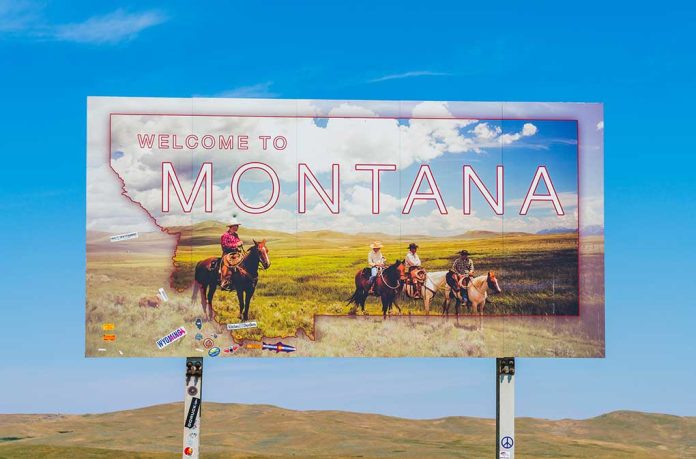
(NationRise.com) – Each of the 50 states in our union has a unique history in regard to its origin and development. Just as every state has a story to tell, they are also distinctive in their own way. Montana may not seem like much, but it has a rich history and plays an important role in the modern-day United States.
Montana vs. the Other 49 States
When it comes to size, Montana is ranked 4th in the US, being only beaten by Texas, California and Alaska. Despite its size, Montana has one of the lowest populations, with about 1.084 million people living in the state in 2020 — a population density of only 6 people per square mile.
The Treasure State has the largest grizzly bear population of the lower 48 states; the grizzly is also the official state animal. Montana is so sparsely populated that elk, deer and antelope populations are greater than those of humans.
Brief History
The first people to inhabit Montana were Plains Indians. It wasn’t until 1804-1806, during the Lewis and Clark Expedition, when white explorers crossed the state. Along with these trappers and explorers came disease, alcohol and a new economic system, though the fur trade was basically over by the 1840s. Saint Mary’s Mission in Bitterroot Valley, believed to be the first permanent settlement in Montana, was created by Roman Catholic missionaries who followed the trappers into the region. With these missionaries came the promotion of agriculture and the construction of a sawmill.
In the 1860s, prospectors were drawn to the area after the discovery of gold. In 1864, Montana officially became a territory. The increase of people into the territory created boomtowns that died out after the gold ran out just as quickly as they rose. More and more white people moved into the area, cutting natives off from their hunting grounds and causing increased conflicts.
Despite Native American victories at the Battle of Little Bighorn in 1876 and Big Hole Basin in 1877, the United States Army was simply too overwhelming for the Indians. Gold wasn’t the only reason business started booming in Montana; with the population of miners growing, so did the demand for beef. As a result, cattle ranches became a large part of the territory.
Statehood
During the 1880s, railroads began crossing Montana, and in 1889, the territory officially became the 41st US state. The passage of the Enlarged Homestead Act in 1909 saw tens of thousands of homestead farmers move into Montana to take advantage of the inexpensive land. After World War I, a drop in market prices, in combination with an extended drought, forced many of the farmers to leave Montana.
The state’s depression flowed right into the Great Depression of the 1930s, until President Franklin D. Roosevelt brought projects and agencies into the state, bringing some relief. The establishment of these agencies was the first time a state depended on federal spending, a relationship that continued through the 20th century.
World War II helped Montana snap out of the depression as it brought federal funding into the state. It also drew young people out to the West Coast and into service, an action that changed Montana forever.
Modern-Day Montana
The mining industry saw intense fluctuations, as did timber and petroleum, causing these industries to have unstable employment patterns. Despite being dependent on the weather, international markets and a declining workforce, agriculture has been Montana’s top industry. Tourism overtook mining in 1970 to hold second place in terms of the state’s industry. Politics in Montana have taken on a more conservative outlook, with more individual responsibility and efforts to conserve Montana’s environment.
Conserve Landscape
No state’s history is perfect, and Montana is certainly no exception. Officials have taken steps to connect with Native American communities and conserve the state’s beautiful landscape. The Gold and Silver State is surely a place to visit with its short, yet rich, history. As we move forward, we can only hope Montanans and the Indians who call Montana home can build upon their relationship and continue conservation efforts of its land.
Copyright 2023, NationRise.com






















